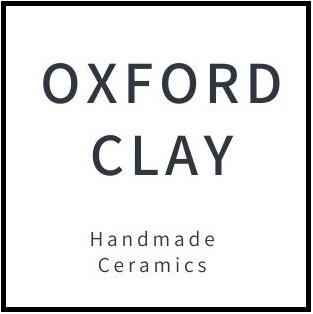Pottery in Oxfordshire - a brief history
When you think of Oxford, you don't normally think of the pottery industry. Not many people are aware that Oxford has an ancient history of pottery production dating back to Roman times.
Natural Materials
The Oxfordshire region has rich natural resources of two different types of clay (Kimmeridge Clay and Oxford Clay), as well as sand and grit, all of which were needed as raw materials in the pottery industry.
The Oxford Pottery Industry in Roman Times
During Roman times a major pottery industry flourished in Oxford from the 1st to the 5th centuries. A line of kilns have been found on the grounds of the Churchill Hospital in the Headington area of Oxford, and another significant kiln site has been found on Between Towns Road in Cowley.
Romans made a particular type of cooking pot in Oxford called ‘mortaria’. Mortaria’s were made of white iron-free clay found at Shotover Hill in Oxford mixed with locally sourced grit which was pressed into the base of the pot for strength. Oxford-made mortaria were sold throughout Roman Britain and pots from the Oxford area have been found in Scotland, Paris and Bruges.
Oxford Pottery in the Middle Ages
After the decline of the Roman pottery industry, pottery continued to be made in Oxfordshire although on a much smaller scale. Even though Romans had used sophisticated domed kilns with upright flues, it took until the 9th century for these to be reintroduced back into Oxfordshire.
In the 11th century, potteries existed at Bladon and Woodstock, but they made pottery for the local market and it was not traded elsewhere.
Many pieces of medieval pottery have been found in Oxford. This jug is thought to have been made in the 13th or 14th century and was found on the site of Hertford College in Oxford. It shows a distinctive ‘face mask’ design that is typical of pottery made in Oxford at this time. This jug is one of may found in Oxford kept as part of the collection at the Ashmolean Museum, Oxford.
The ‘Country Potter’ - Oxfordshire Pottery supplied local markets
After the 16th century, the English pottery industry continued in two separate traditions; fine tableware produced in major pottery production areas such as Staffordshire, London, and Bristol, and country pottery which was produced locally for local markets. Oxfordshire potteries at Nuneham Courtenay and Marsh Baldon went out of business during this time, but a pottery remained in Abingdon. The clay in Oxford continued to be dug and used. During the English Civil War soldiers in Oxford were given pipes made with the white clay found at Shotover Hill.
By the 18th century, new potteries to supply local demand had been established at Nettlebed, Stoke Row, Leafield and Wheatley all using local supplies of clay. However, these potteries all later closed and the last pot was made at Nettlebed pottery in 1938.
The brick-works at Shotover Hill in Headington, Oxford
The rich clay and sand deposits at Shotover Hill in Oxford sustained a brickmaking industry from the nineteenth century until the First World War. In 1914 there were four brickyards making bricks at Shotover, and three others had only recently closed. Clay was traditionally dug in the winter months when it was wet enough to dig and stored until the summer when the bricks were made. To make the bricks workers dipped the brick mould in water then into sand, before pressing the clay into the mould, and turning it out onto a board to dry. Each worker was able to make one thousand bricks per day!
Brick making was not a well-paid job so households often took on extra jobs such as laundering sheets and linen for the local Oxford University Colleges. Households dried the washing outside, and it was said visitors to Headington Quarry might think they “had come upon a gala day with flags flying from every line” (Coppock & Hill, 1933: 52). The brick-making industry at Shotover Hill closed during the First World War as there were not many workers, coal was difficult to obtain for firing the kilns and the demand for bricks declined during this time.
Today, neither Kimmeridge Clay nor Oxford Clay are commercially dug in Oxford. However, ball clays and china clay from South West England are still mined, and used in all Oxford Clay handmade ceramics.
References and Further Reading on the Pottery Industry in Oxfordshire:
Green, L. S, (1983) ‘The Roman pottery manufacturing site at Between Towns Road, Cowley, Oxford’, Oxoniensia, 48, pp. 1-11.
Cook. J and Taylor. L (1987) A village within a city: The story of Old Headington, Oxford, The Friends of Old Headington
Coppock G.A and Hill B.M (1933) Headington Quarry and Shotover: A History compiled on behalf of Quarry Womans Institute, Oxford, Oxford University Press
Hinton, D.A (1973) Medieval Pottery of the Oxford Region, Oxford, Ashmolean Museum
Mellor. M, Rhodes. J, Stebbing. N (1980) The Clay Industries of Oxfordshire: Oxfordshire Potters, Oxford, Oxfordshire Museums Service, Publication Number 13
Oxfordshire County Council (1992) The Story of Oxford, Stroud, Alan Sutton Publishing Ltd.



